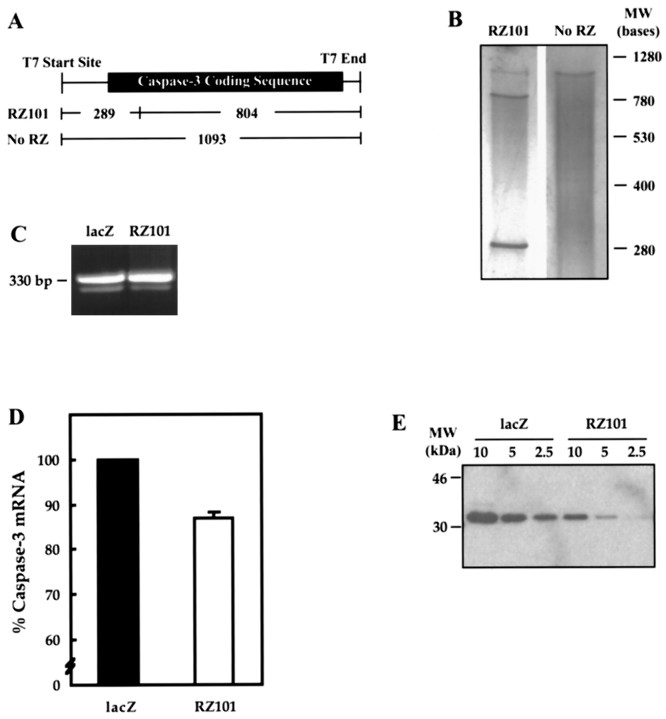Fig. 6.
Efficacy of ribozyme RZ101 against rat caspase-3.A, Expected cleavage fragments with RZ101.B, In vitro cleavage of rat caspase-3 RNA by RZ101. Ribozyme or caspase-3 RNA were generated by in vitro transcription using T7 RNA polymerase. Caspase-3 RNA was incubated with either ribozyme or water for 1 hr at 37°C and then analyzed by electrophoresis and silver staining. Specific cleavage fragments migrated at their expected positions. C, Quantitative RT-PCR of endogenous caspase-3 in rat PC12 cells transfected with RZ101 or β-galactosidase. After 24 hr of serum deprivation, total mRNA was amplified for caspase-3 (323 bp) and cyclophilin (330 bp). D, After staining with ethidium bromide, the bands were quantified by densitometry. The ratio of caspase-3 to cyclophilin band volumes were calculated, and data were expressed as a percent value of the β-galactosidase-transfected control result. RZ101 produced a 13 ± 1% reduction in signal. Given a 20% transfection rate, the calculated reduction in caspase-3 mRNA in RZ101-transfected cells alone is ∼65%. E, Western blot for endogenous caspase-3 in PC12 cells transiently transfected with β-galactosidase or RZ101. For each condition, 10, 5, and 2.5 μg of protein dilutions were analyzed. RZ101 effectively downregulates caspase-3 protein expression.

